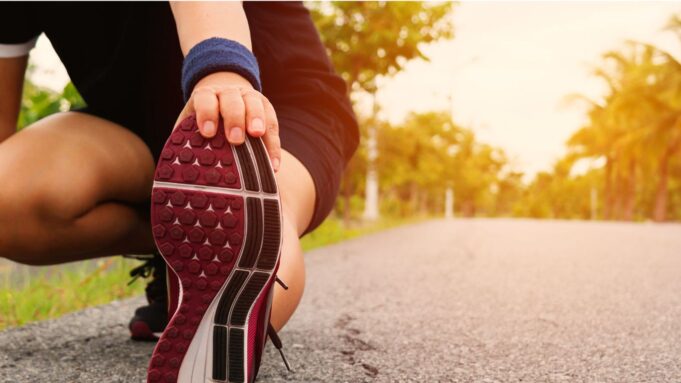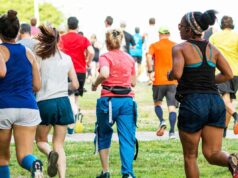Runners, whether seasoned or beginners, often focus on mileage, pace, and technique. However, one crucial aspect that often gets sidelined is stretching. Stretching and strength training are vital components of a holistic running regimen, ensuring not just flexibility but also injury prevention and enhanced performance.
In this blog, we’ll delve deep into the importance of stretching for runners, backed by scientific research and expert opinions.
Why is Stretching Important for Runners?
1. Injury Prevention: Tight muscles can lead to imbalances in your body, increasing the risk of injuries. Regular stretching helps in maintaining a balance in muscle length and strength, reducing the chances of strains and sprains.
2. Enhanced Performance: A flexible muscle has a better chance of achieving its maximum range of motion, leading to increased stride length and speed.
3. Improved Blood Flow and Recovery: Stretching increases blood flow to the muscles, aiding in quicker recovery post-run and reducing muscle soreness.
4. Better Posture and Balance: Regular stretching can help in maintaining a good posture, especially for long-distance runners, and can also improve balance, reducing the risk of falls.
Scientific Backing
Research continually underscores the significance of stretching for runners. A study published in the National Center for Biotechnology Information (NCBI) highlighted that runners with less natural flexibility experienced more pronounced benefits from stretching compared to those with average flexibility. This research underscores the importance of a tailored stretching regimen, especially for those who might feel they don’t ‘need’ it based on their current flexibility levels.
Four Key Stretches Every Runner Should Know
1. Quadriceps Stretch: Stand on one leg, holding onto a support. Grab your opposite ankle and pull it towards your buttocks. Hold for 15-30 seconds and switch sides.
2. Hamstring Stretch: Sit on the ground with one leg extended out and the other bent with the sole of the foot against the inner thigh of the extended leg. Lean forward from the hips and try to touch the toes of the extended leg. Hold for 15-30 seconds and switch sides.
3. Calf Stretch: Stand facing a wall with hands pressed against it. Extend one leg behind with the heel pressed to the floor and the other bent in front. Push against the wall until you feel a stretch in the calf of the extended leg. Hold for 15-30 seconds and switch sides.
4. Hip Flexor Stretch: Start in a lunge position with one foot forward and the other extended straight back. Push your hips forward until you feel a stretch in the front of the hip of the extended leg. Hold for 15-30 seconds and switch sides.
Expert Opinions and Recommendations
1. Runner’s Athletics, emphasizes the significance of regular stretching, stating that it “improves flexibility , which is the range of motion for joints, determined by how muscles, ligaments, and tendons function.”
2. Runner’s World highlights the importance of dynamic stretching, suggesting that it’s a tool “reducing the risk of injury for endurance athletes.”
3. Sprint Rehab points out that while research hasn’t definitively proven stretching prevents injuries, many runners have reported that ‘stretching helps relieve pain and discomfort.”
4. Another study cited by Runner’s World reveals that stretching can have cardiovascular benefits, suggesting that consistent stretching “reduces the risk of heart disease and diabetes).”
By reading insights from these expert sources, it’s evident that stretching plays a multifaceted role in a runner’s routine, impacting not just muscle health but overall well-being.
Incorporating Stretching into Your Running Routine
The article from Owayo provides an insightful perspective on the importance of stretching for runners. It emphasizes the significance of both dynamic and static stretches and offers a comprehensive guide on when and how to incorporate them into your routine. As the article rightly points out, “Stretching should be an integral part of any runner’s regimen, not an afterthought.”
Stretching is not just about flexibility; it’s about enhancing your overall running performance, preventing injuries, and ensuring a long and healthy running journey. So, the next time you lace up those running shoes, remember to stretch before and after your run. Your body will thank you!
*This blog post is based on information from high-authority sources and scientific research. Always consult with a professional or physiotherapist for personalized advice.*






